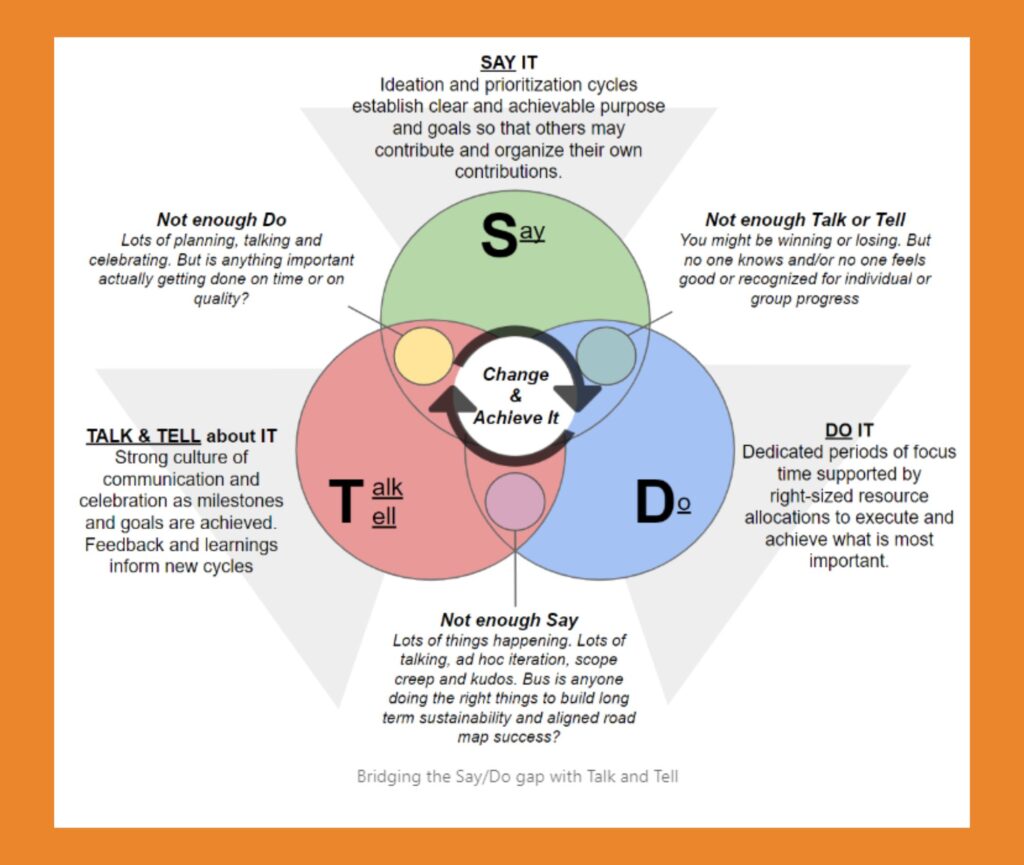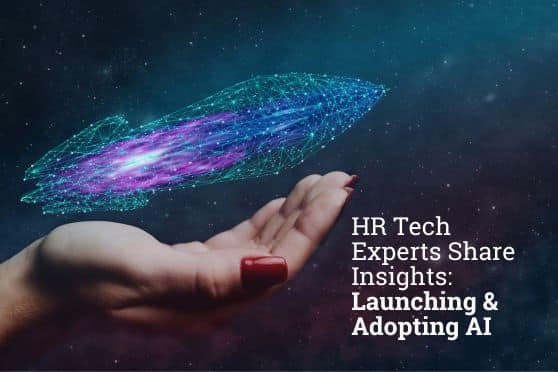Integrating artificial intelligence (AI) solutions has emerged as both an enticing opportunity and a formidable challenge. AI, while holding potential, poses a series of intricate puzzles for organizations. As the technology landscape evolves, workplaces are constantly adapting. We spoke to several experienced professionals on the challenges of launching and adopting AI in the workplace. Their insights into launching and adoption of these solutions can help workplaces initiate AI solutions more effectively in your organization.

Meet Our Human Resources (HR) Technology and AI Practitioners
Quincy Valencia: Renown in the industry as the “Queen of the Chatbots,” Quincy is an accomplished talent solutions strategist. With a robust background in steering strategy development, process formulation, and reengineering for talent recruitment, management, and retention, she is recognized for delivering strong leadership, driving global program/project implementation, and combining business acumen with innovative thinking. Chat with Quincy.
Derek Sidebottom: A distinguished global talent executive, coach, and consultant, Derek excels in optimizing organizational capacity. Through his proven expertise in international and remote workforce management, executive coaching, Derek has diverse experience in areas such as IPOs, M&A, software development, business development, and diversity and inclusion advocacy. Reach out to Derek.
Jenny Cotie Kangas: JCK, as her friends and industry peers call her, underwent a transformative experience in 2020 that propelled her into the world of User Experience. She developed a keen ability to ask incisive questions and approach design with a unique perspective. Using her background, she partners with individuals and organizations in building strong, scalable, and sustainable solutions grounded in a commitment to getting it right. Engage with Jenny.
Tim Whitley: As an HR technology professional with over 10 years of experience in HR and IT, Tim is dedicated to leveraging data and technology to optimize HR practices, enhance workplace productivity, and address the challenges faced by HR professionals. Connect with Tim.
Unique Elements to an AI Launch
Tim Whitley notes that a key aspect of introducing AI and machine learning tools in the workplace is their explainability (https://www.ibm.com/topics/explainable-ai). These tools are powerful because they autonomously determine the best path from Point A to Point B, given an outcome and some parameters. However, this autonomy can make understanding and explaining their decision-making processes challenging. This understanding is particularly critical in HR (Human Resources) for recruiting and performance management tasks, where transparency is essential for fairness, legal compliance, and trust. The goal in HR is to reach the proper outcomes ethically and transparently. Therefore, it is vital to choose AI tools that provide clear insights into their decisions and to provide human oversight in critical decision-making processes.
Key Elements Before Going Live with an AI Solution
Launching an AI solution represents the culmination of strategic planning, technological implementation, and the anticipation of transformative outcomes. Before deploying, some checklist items should be addressed. Quincy Valencia says that, for AI specifically, it is critical that organizations thoroughly investigate and clear the following before turning something on:
- Make sure the solution meets data privacy regulations and local laws. This includes protection of Personally Identifiable Information (PII), data, encryption, access control, and audit trails.
- Check testing has been conducted to provide bias mitigation (that may need to be provable and defensible in a court of law). This can be tricky. AI built on a homogenous data set has the potential to perpetuate existing biases.
- Develop a comprehensive training program so employees understand how to use it effectively and trust its outputs.
- Implement a robust change management plan to facilitate a smooth transition to an AI-driven HR process.
- Define KPIs (key performance indicators) to assess the impact of the solution on achieving stated goals. Regularly review them to identify areas for adjustment and to guarantee that the solution is continuing to meet its objectives.
Integrity Guardrails for AI Launch
Integrity guardrails are the ethical compass in an AI implementation. Acknowledge that just because a certain capability exists within AI, it does not mean it should be implemented without careful consideration of its broader impact. Jenny Cotie Kangas (JCK) defines integrity guardrails as ethical and operational guidelines for responsible and safe AI development and deployment. JCK recommends aligning with leadership on goals and ethical considerations, building strong vendor partnerships, and practicing restraint and ethical judgment.
Insights on Implementing Multiple AI Models
Implementing multiple AI models means integrating more than one artificial intelligence algorithm or system within a single application or across various organizational functions. This approach harnesses the distinct strengths of different AI models to address complex problems, enhance decision-making, and optimize operations. Each model may excel in specific tasks, creating a synergistic effect when combined. A thorough understanding of the organization’s overarching strategy is needed to align AI initiatives with strategic goals. JCK provides a foundational understanding of implementing multiple AI models. She defines it as integrating various AI algorithms or systems to create a more robust infrastructure. Coordination is key, and JCK highlights the necessity of a robust documentation strategy, emphasizing the importance of understanding the ‘why,’ ‘what,’ and ‘how’ of each AI model for alignment, scalability, and compliance.
Best Practices for a Successful AI Launch
Quincy Valencia says that organizations need to understand what they want the tool to accomplish and have data to measure those accomplishments. They need to make sure that what they are implementing is done ethically, and that it complies with all laws and regulations about its use. Followed by communicating the tool’s value to stakeholders, before and during application. And finally, providing training on the tool’s purpose and use.
Derek Sidebottom simplifies successful AI launches into optimizing the SAY/DO/TELL cycle, emphasizing the alignment of communication, actions, and information dissemination.

Adopting AI Solution – Defining and Measuring Success.
JCK underlines the crucial role of measurement in any strategic implementation. She recommends a baseline through strategic questioning, addressing specific objectives— integration with existing workflows, metrics (KPIs), training and change management, and feedback mechanisms.
Quincy says measuring adoption requires assessment of both the integration of AI into HCM (Human Capital Management) processes and how well organizations use these solutions. Like adoption assessments of any modern technology, organizations must define the metrics. These measures could include how many people could be impacted. How much time and money could be saved? How much impact could the tool have on the organization’s standard KPIs like recruitment efficiency, employee retention, or workforce diversity? There are ways to measure usage, like Pendo.
For example, you can track how often and for what things AI tools are used. But not all organizations have that kind of software. The best way to promote adoption is to get good at the “what’s in it for you” conversations, prior to rollout and segmented by stakeholder groups. Then, provide appropriate training and skill development, as needed, measure impact based on the above-mentioned KPIs, re-communicate, reskill, re-measure, rinse, and repeat.
Measure AI Solutions Continuously Post-Launch
Tim says to develop a dynamic dashboard that is regularly updated, displaying baseline figures and target goals. This dashboard will provide a real-time view of progress and areas needing attention. Finally, complement quantitative data with qualitative insights. Understand the tool’s impact on its users through focus groups, surveys, or interviews. Their feedback is invaluable for identifying areas for improvement, suggesting enhancements, and championing the tool within their networks.
Making AI Solutions Scalable to Accommodate Future Growth and Changes in Workplace Technology
Scalable technology comes down to having the right people, says Tim. AI’s agility and adaptability require support from agile and adaptable people. Prioritize recruiting individuals who are versatile and adept at embracing change. Technical skills are less critical than people who understand business requirements and creative design. The technical demands will change, but people’s skills will not.
Keeping AI Solutions Top of Mind
Organizations can share success stories and case studies to show how AI solutions helped projects or processes. Real-world examples resonate with employees, making the benefits of AI tangible and relatable. Derek reflects on the rapid pace of technological change, drawing parallels with historical shifts. He emphasizes the need for management to embrace continuous disruption. The recommendation is to cultivate an environment that rewards disruptive change and operational excellence, balancing short-term optimizations with long-term transformative goals. Lastly, establish open feedback channels for employees to express their thoughts, concerns, and ideas regarding AI adoption. Actively address feedback, fostering a sense of inclusivity and transparency in the AI integration process.
Putting It All Together
Organizations can use expert insights to understand and make decisions about AI. This includes strategic vision, ethical considerations, and a nuanced understanding of technological and human elements. Adopting AI solutions demands a delicate blend of strategic thinking, agility, and a profound understanding of the human element. Embracing change and fostering a culture of innovation will undoubtedly be pivotal to sustained success.
PRO-TIP: Have you thought about experimenting with AI by engaging solution providers in a AI software pilot program? Read more about navigating an AI software pilot program.

ABOUT AUTHOR
Bennett Sung
Working in HR / Work / and Recruiting Tech for 17+ years, Bennett collaborates with leading solution providers (including ADP/VirtualEdge, Bullhorn/Jobscience, Koru/Cappfinity, AllyO/HireVue, Humanly, and now MeBeBot) on their brand strategy, branding activation and demand generations.
